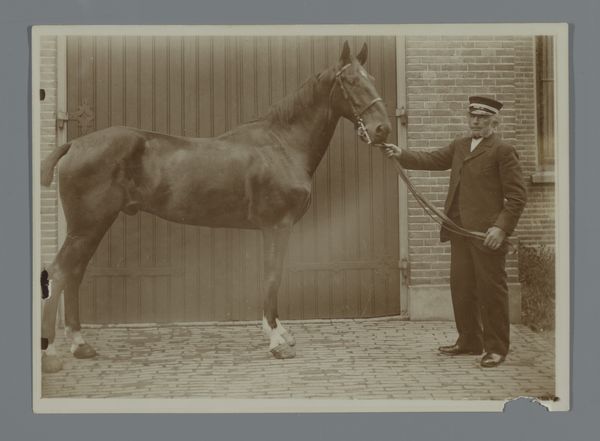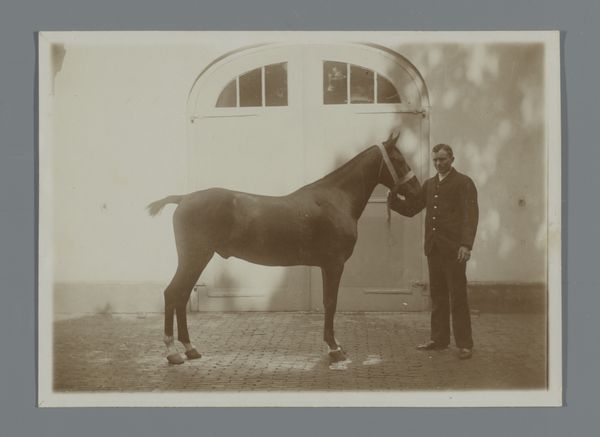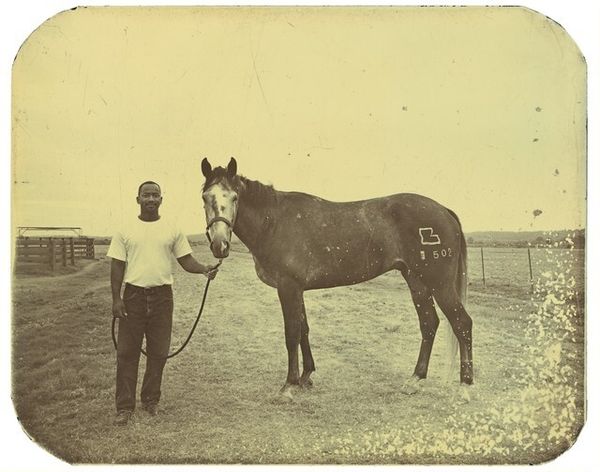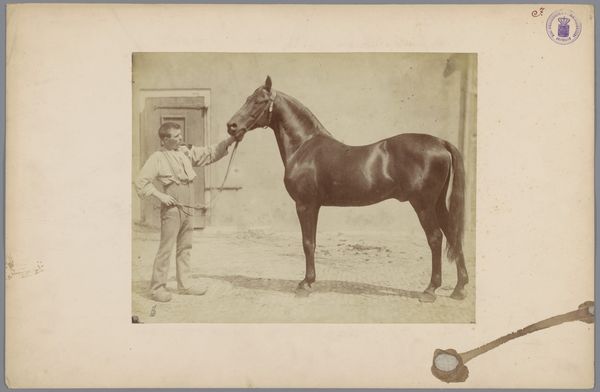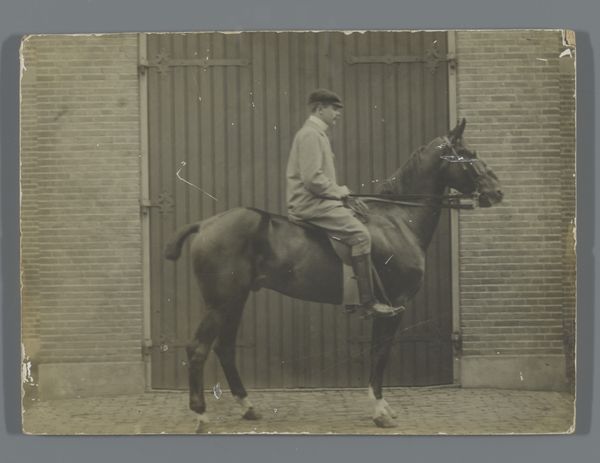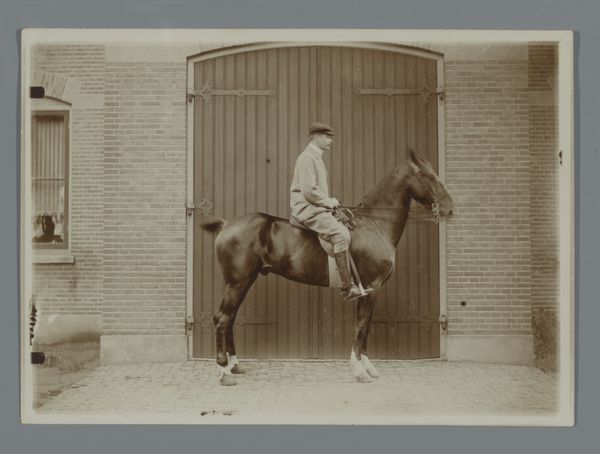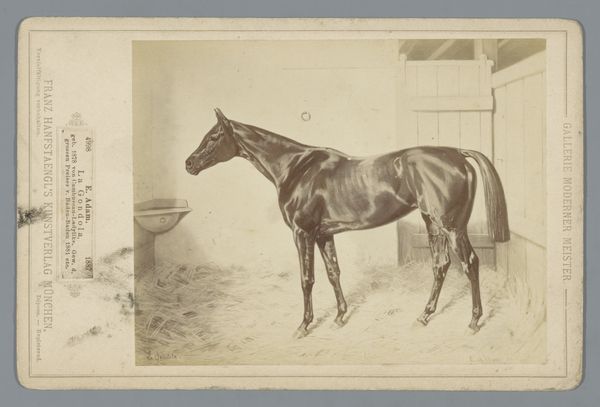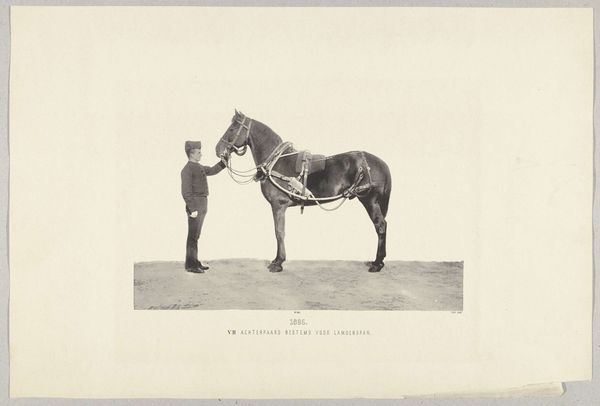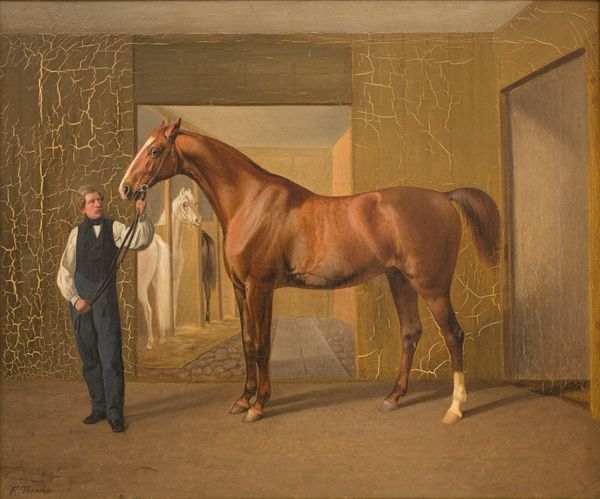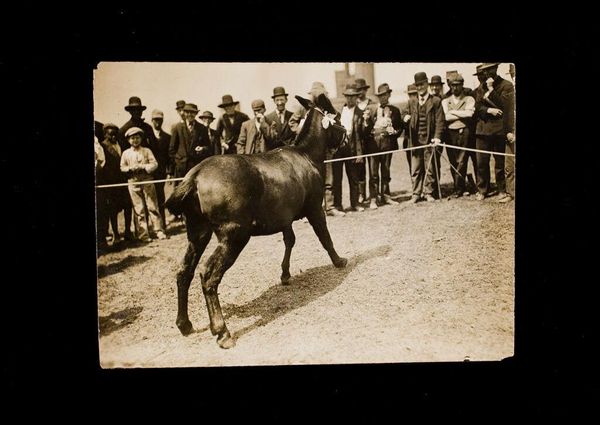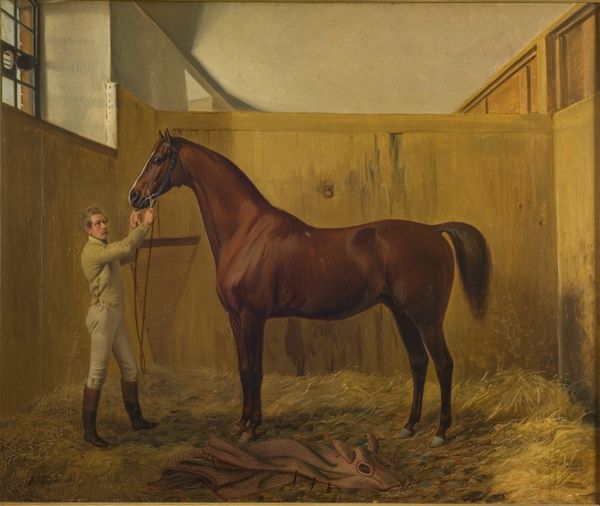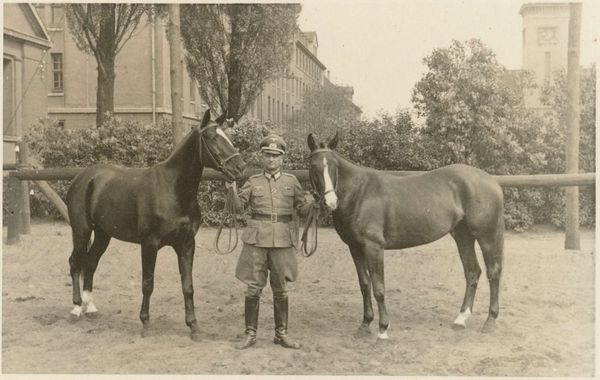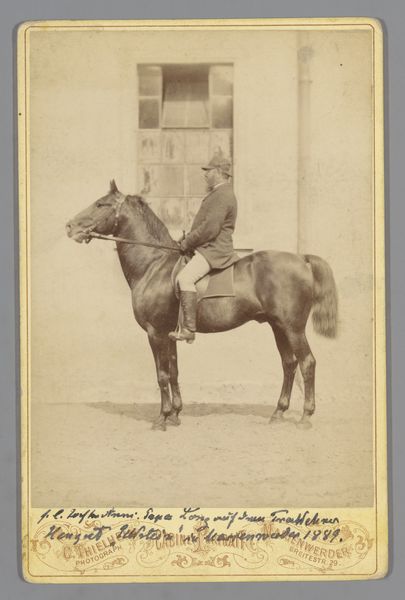
photography, gelatin-silver-print
#
portrait
#
pictorialism
#
photography
#
gelatin-silver-print
#
realism
Dimensions: height 127 mm, width 177 mm, height mm, width mm
Copyright: Rijks Museum: Open Domain
Editor: This gelatin-silver print, “Het paard Bobbie met man aan teugel voor de schuur,” or "The horse Bobbie with man at the reins in front of the barn," made around 1896 by Hendrik Herman van den Berg, has this strikingly formal feel. It feels staged and proper, almost like a family portrait. What do you see in it? Curator: It’s precisely that "staged and proper" feeling that strikes me, too. Pictorialism in photography at that time sought to elevate photography to the status of fine art, emulating painting. The formal arrangement, the subject matter - it’s all constructed to be perceived in a very particular way. Consider how this photo was initially presented: was it in art galleries, photographic salons, or even circulated amongst a local community to document property or family wealth? These factors would influence how it was initially understood and valued. Editor: So, its presentation influenced its value? In what way? Curator: Absolutely. A photograph presented in a gallery challenges notions of photography's inherent connection to realism. Suddenly, we're prompted to think about composition, artistic intent, and the artist's role, rather than pure documentation. Was Van den Berg engaging with artistic photography, perhaps submitting this image to salons, to demonstrate his artistic skill, or fulfilling a more practical commission? This information shifts our understanding. Editor: That’s fascinating, considering the equipment was fairly novel back then! How would an art piece such as this have influenced or affected Dutch society at the time? Curator: This image could serve a social purpose as much as an aesthetic one. It immortalizes both the animal and its handler, suggesting a particular relationship to land and labor. These images help us to reconstruct a specific time, place and class dynamics through material culture. It gives rise to new interpretations, too! Editor: Thanks, I hadn’t considered its value in a societal context before. Curator: Indeed, thinking about where images circulate, who they depict, and what they signify beyond the immediate frame always provides invaluable context.
Comments
No comments
Be the first to comment and join the conversation on the ultimate creative platform.
